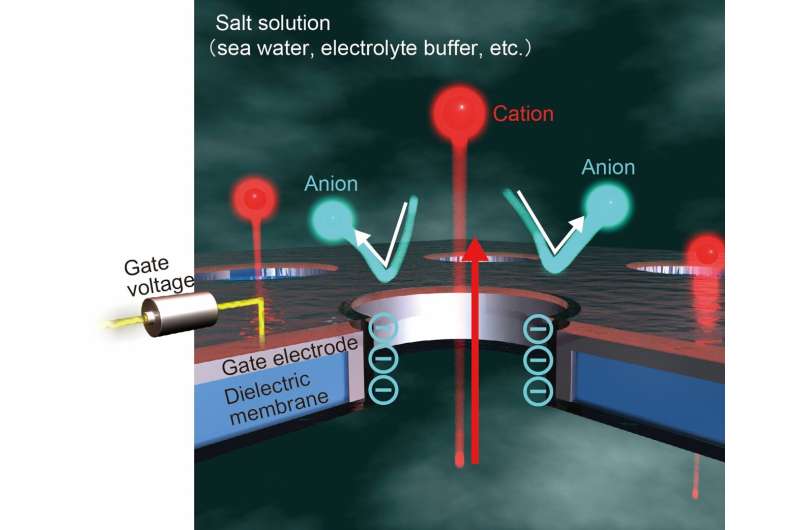Unleashing the power of ion transport: Nanopore membranes pave the way for a blue energy future

Available as of May 30, 2024
The content detailed within this article has undergone a meticulous review as per the set editorial process and guidelines of Science X. The editors have emphasized on certain features in order to ensure the credibility of the content under discussion:
- It has been fact-checked
- Published following a peer-review
- Sourced from a trust-worthy source
- Thoroughly proofread
By none other than Osaka University
Blue energy holds notable promise in terms of offering a sustainable alternative to customary fossil fuels. It technically refers to the energy generation via the movement of ions in a salt solution from a concentrated state to a less concentrated one.
In order to understand the in-depth process, a research team from Osaka University initiated an exploration on the role of voltage on the traversal of ions via a nanopore membrane, thereby significantly controlling the said process.
In relation to a research recently published in ACS Nano, the team shed light on ways to control the ion flow across their membrane through nanopores, thereby making large-scale application of this technology a feasible reality.
If membranes are curated from charged substances, nanopores are capable of stimulating a flow of current through them by pulling in ions from the solution that possess an opposite charge. Consequently, ions with the same charge traverse the pore, thereby generating the current. This entails that the technique of choosing the pore material plays a critical role in maintaining flow and current.
However, creating identical pore structures amidst different materials to gauge their comparative performances presents to be quite daunting. Therefore, the researchers decided to explore other means to tailor the ion flow across the nanoporous membranes.
'We considered applying voltages to understand their effect on the flow instead of merely relying on the elementary surface charge of our membrane,' said the principal author of the study, Makusu Tsutsui. 'We relied on a gate electrode embedded across the membrane to control the field via voltage, somewhat akin to the functioning of semiconductor transistors in conventional circuits.'
The researchers noted no charge was generated by the flow of cations, i.e., positively charged ions when no voltage was applied as they were pulled towards the negatively charged membrane surface.
Nonetheless, if varying voltages were applied, the performance can be adjusted to enable the flow of cations, and even attain absolute selectivity for cations, thereby amplifying the osmotic energy efficiency six-fold.
'By enhancing the surface charge density of the nanopores within the membrane, we managed to attain a power density of 15 W/m2, which is an extremely encouraging feat in forwarding the technology,' stated the senior author of the study, Tomoji Kawai.
The outcome of the study underscores the potential of nanopore membrane scalability for public application. It is envisaged that nanopore osmotic power generators would pave the way for the integration of blue energy within mainstream practices for a more sustainable energy future.
For more details: Refer Makusu Tsutsui et al, Gate-All-Around Nanopore Osmotic Power Generators, ACS Nano (2024).
Source of the journal: ACS Nano
Provided by Osaka University.




